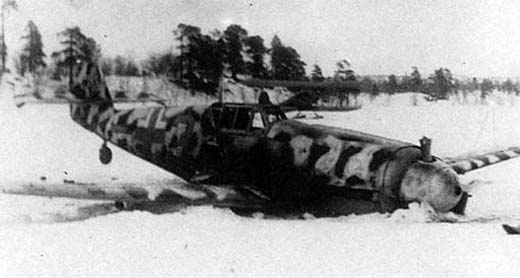Air Operations, Aleutians
14 28th Composite Bomb Group B-24s, 12 B-25s, 23 343rd Fighter Group P-38s, and 32 P-40s mount 9 separate attacks against Kiska.
Air Operations, Bismarcks
43rd Heavy Bomb Group B-17s, 90th Heavy Bomb Group B-24s, and V Bomber Command B-25s mount numerous individual attacks against the Gasmata and Cape Gloucester airfields on New Britain.
[Air Operations, CBI
BURMA- 9 341st Medium Bomb Group B-25s attack the main rail station in Rangoon.
- 51st Fighter Group P-40s attack several bridges throughout Burma.
Air Operations, Europe
BOMBER COMMANDDaylight Ops:
- 6 Mosquitos are sent to bomb the raiway shops at Namur but cannot locate the target due to poor visibility.
- There are no losses.
Air Operations, New Guinea
43rd Heavy Bomb Group B-17s, 90th Heavy Bomb Group B-24s, and V Bomber Command B-25s mount numerous individual attacks against the Hollandia airfield and the Malahang airfield at Lae.
[Air Operations, Solomons
In the first victory of its kind in the Pacific, a P-70 night fighter piloted by Capt Earl C. Bennett, of the 6th Night Fighter Squadron, downs a G4M 'Betty' bomber near Tulagi at 0425 hours.
[Air Operations, Tunisia
- NASAF B-17s attack shipping at Tunis.
- NATBF (Northwest African Tactical Bomber Force) A-20s attack La Sebala Airdrome.
- NATAF fighter-bombers attack German Army tanks along the active battlefront.
- IX Bomber Command B-25s attack Axis landing grounds and German Army defensive positions.
- In the course of three separate aerial engagements between 1040 and 1730 hours, pilots of the 31st and 52nd Fighter Groups down 5 Luftwaffw fighters.
Axis Diplomacy
[Eastern Front
Heavy fighting is taking place in the Kuban region. Elsewhere activity is light.
The Bf 109 of Rudolf Müller |
 |
North Africa
TUNISIAAnother German effort to fly in supplies suffers disastrous losses./
The 8th Army attacks the Enfidaville Line in moonlight, protected by a creeping barrage.
The plan for the main assault on Tunis and Bizerte is outlined. It is scheduled to begin on the 22nd. The US II Corps assumes command of a new zone on the northern flank of the Allied line at 1800, with the front extending from the coast east fo Cap Serrat to Hill 667, 5 miles west of Heïdous. The Corps Franc D'Afrique is attached to the 9th Div and given the zone on the extreme north.
In the British 1st Army area, the V Corps' northern boundary is shifted southward as the US II Corps takes over the coastal region. The French XIX Corps, holding the line Karachoum-Djebel Edjehaf-west of Djebel Mansour, is maintaining patrol contact with the British 8th Army on the right.
The British 8th Army opens an assault on the enemy's Enfidaville position after an intensive preparatory bombardment. The X Corps jumps off at 2130, with the 50th Div on the right, the New Zealand 2nd Div in the center, and the Indian 4th Div reinforced by L Force on the left. The 7th Armored Div guards the west flank. The enemy is initially force to give ground.
[Pacific
The US submarine Seawolf (SS-197) sinks the Japanese depot ship No. 5 Banshu Maru (389t).
[Poland, Resistance
The remaining population of the Warsaw ghetto rises against the Germans. In October 1940 there were probably almost 500,000 Jews who had been herded into the ghetto. By July 1942, when the extermination policy began in earnest, there were 380,000 left, and by October 1942, 70,000 left. Most of the rest have been taken to be murdered in Treblinka. The SS move to destroy the remaining 63,000(?), but the 'Jewish War Organization' (ZOB), Irgun and a few Polish supporters totalling about 1,500 fight for 27 days from dugouts, cellars and sewers. One of the Jewish commanders writes of the uprising: 'Jewish self-defense has become a fact. Jewish resistance and revenge have become realities.'
The poorly armed Jews fight 2,000 tank-supported SS troops who are stunned by the ferocity of the Jewish fighters. Over 7,000 Jews are killed, 7,000 captured Jews are shot, 22,000 are sent to concentraton camps and 20,000 to labor camps. SS casualties in the fighting: 16 killed; 85 wounded.
The Warsaw uprising begins. Organized by the ZOB (Zydowska Organizacja Bojowa - Jewish Fighting Organization), which is led by 23-year-old Mordecai Anielewicz, it is sparked by German troops and police entering the ghetto to deport its surviving inhabitants. Around 750 fighters with few weapons and no military training fight the heavily armed Germans. The ghetto fighters were able to hold out for nearly a month, but by May 16, 1943, the Germans had crushed the revolt. Of the more than 56,000 Jews captured, about 7,000 were shot, and the remainder were deported to concentration camps.
[